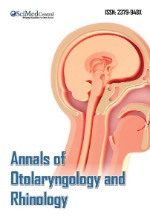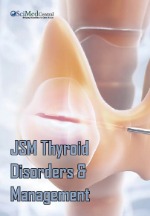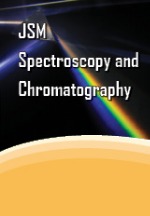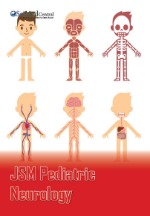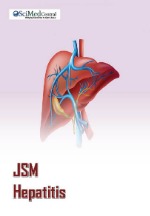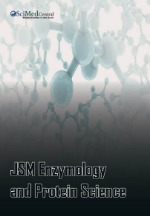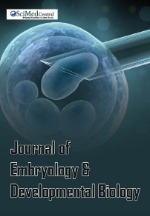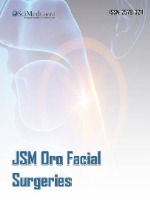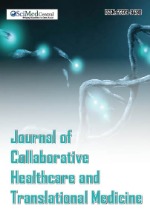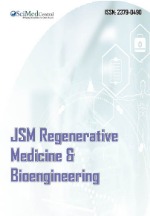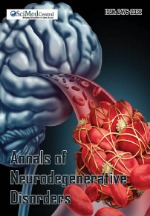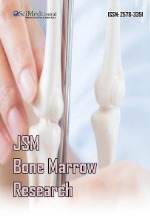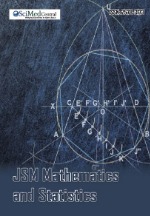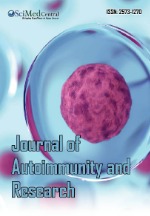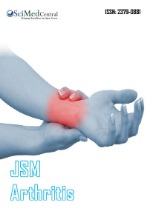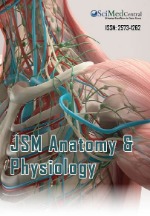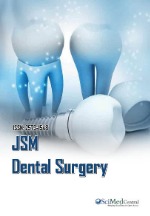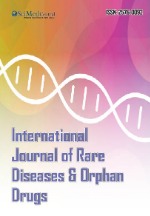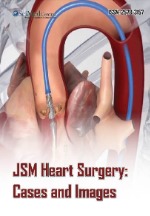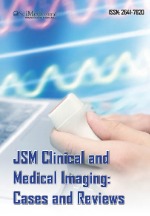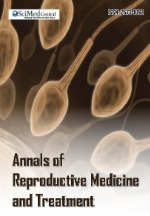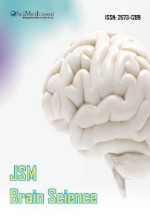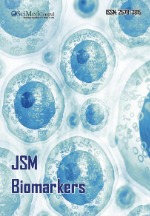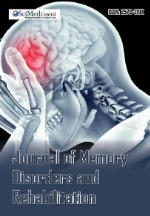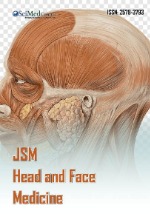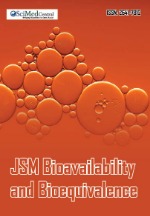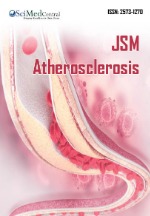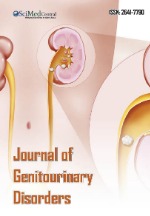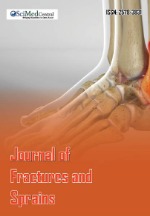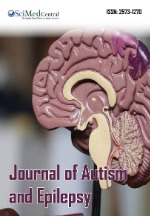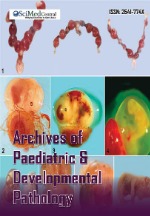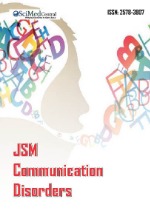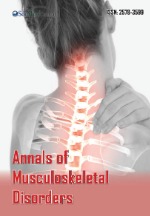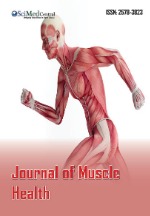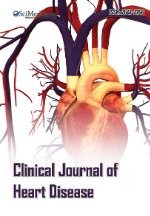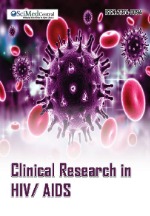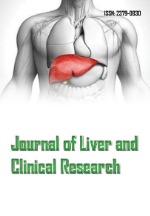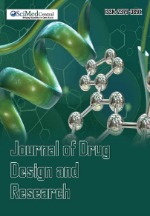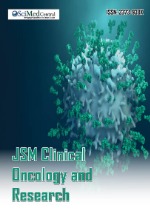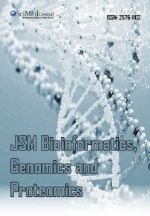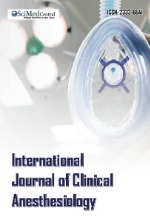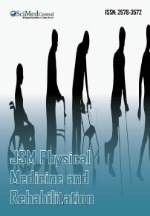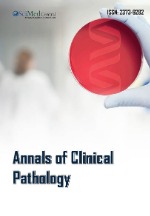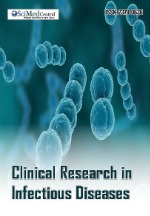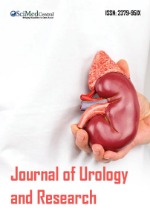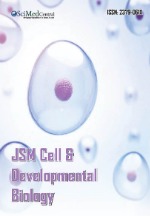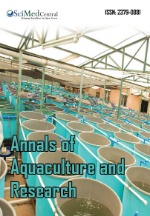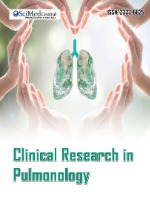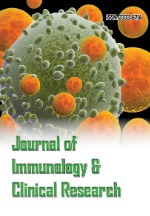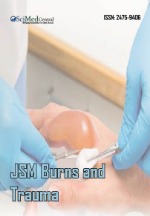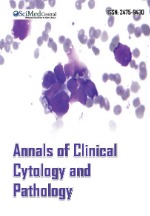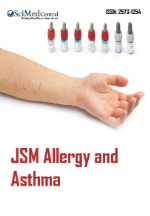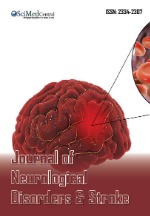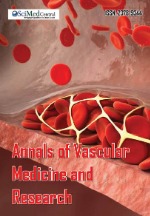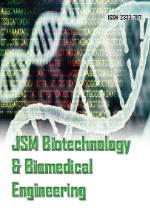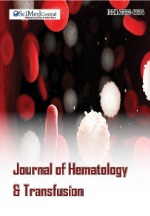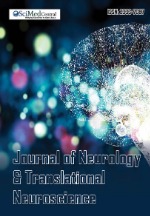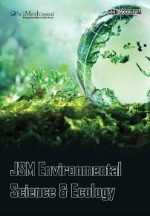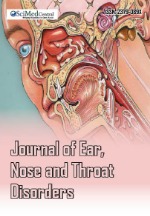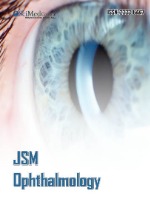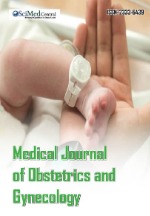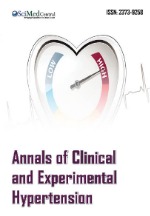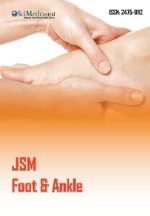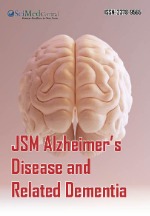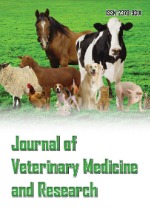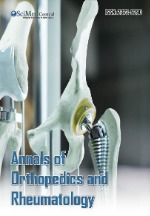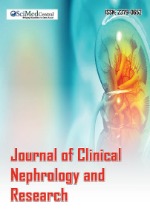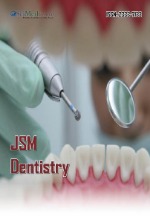A Randomized Prospective Clinical Study of Celiac Disease Prevalence and Various Characteristics and Association between Endoscopic and Microscopic Villous Atrophy
- 1. Department of Gastroenterology and Hepatology, Saint Michael’s Medical Center in Affiliation with New York Medical College, USA
Abstract
Introduction: Celiac disease (CD) is a chronic, immune-mediated disorder that affects the small intestinal mucosa. The prevalence of CD has steadily increased with a higher ratio in females compared to males. There is a lower prevalence in the afro-caribbean population relative to people originating in Europe who have a higher genetic predisposition. Diagnosis of CD is made with endoscopic visualization, histopathology, serology and genetic testing; histopathology being the gold standard including endoscopic visualization of villous mucosa changes and erythematous mucosa. Histopathology biopsy findings may include intraepithelial lymphocytosis, crypt hyperplasia and villous changes. Our study was designed to report on associations between endoscopy and histopathology within patients from a single, small community hospital. Patients were screened and samples were collected from December 2020 until March 2023.
Method: We performed a randomized, prospective study consisting of seventy-eight patients with persistent clinical symptoms and medical history suspicious for celiac disease. We followed strict IRB protocol guidelines for inclusion and exclusion of patients. Patients reporting clinical symptoms of CD or who met the criteria for screening were included in the study. Patients were excluded if they were not willing to give consent, who are going for an emergent therapeutic Upper endoscopy, or were previously diagnosed with CD. Multiple logistic regression was used to find predictors of villous atrophy. The covariate showing the closest statistically significant to 0.05 were included in the multivariable model and analysis was performed using Stata/BE 17.0. P-values for categorical comparisons were calculated with Pearson’s chi-squared test. Multiple logistic regressions were performed to identify independent predictors of persistent villous atrophy were performed using Stata Release 13.
Results: Our study examined seventy-eight patients, of which 64% were female and 36% were male. Patients were selected for study based on presenting symptoms and suspicion for CD. Amongst our study population the most common presenting symptoms were: abdominal pain, fatigue, weight loss, and bloating. Approximately 38% of patients reported abdominal pain, followed by fatigue (19%) and weight loss (15%). Of the patients, 50% were African-American or Hispanic, 14% were Central American/Puerto Rican, and 8% were white/Caucasian. Blunting of villi visualized via endoscopy was associated with an increased likelihood of histopathologic changes indicative of CD, however; a p-value of 0.919 on univariate analysis was seen. In addition, villous blunting seen on endoscopy was found to be correlated with erythematous duodenitis (p-value = 0.224).
Conclusion: Our study showed a comparatively lower prevalence of CD and did not show any statistically significant relationship between endoscopic macroscopic and histopathological microscopic villous atrophy. Our study was inconclusive and did not find a statistically significant relationship between the severity of endoscopic mucosa and alterations in histopathology.
Keywords
- Celiac disease
- Villous atrophy
- Intraepithelial lymphocytes
Citation
Lakkasani S (2024) A Randomized Prospective Clinical Study of Celiac Disease Prevalence and Various Characteristics and Association between Endoscopic and Microscopic Villous Atrophy. JSM Gastroenterol Hepatol 10(3): 1127.
INTRODUCTION
Celiac disease (CD) is a chronic systemic, autoimmune disorder in genetically predisposed individuals triggered by exposure to dietary gluten. People originating in Europe, including people in North America and Australia are most genetically predisposed to CD p [1,2]. It is rarely seen in people from an Afro-Caribbean background [2]. CD is an increasingly diagnosed enteropathy with a prevalence of 1-1.4% and seen more in females [1,2]. The best- characterized genetic risk factor for celiac disease, accounting for 35% of the total genetic risk is the presence of HLA-DQ2 and HLA-DQ8 T-cell genetic molecules [3-6].
CDdiffersfromfood allergies (including wheat allergy), which are mediated by immunoglobulin (Ig) E or IgG. Gliadin, which is not fully broken down by the intestine, may pass through the intestinal mucosa in patients with gluten intolerance, producing an immune response by activating class II human leukocyte antigen HLA-DQ2 and HLA-DQ8 T-cell genetic molecules, leading to mucosal inflammation, crypt hyperplasia and villous atrophy [7]. It has been recently shown that drug absorption may be impaired in CD patients who require oral medications for comorbid conditions. Other clues to celiac disease include dermatitis herpetiformis, migraine, family history of first- or second-degree relatives with CD, HLA DQ2/8 risk genotype, type 1 diabetes, osteoporosis, or chronic liver disease [1,7,8]. Some have proposed milk-feeding type and the duration of breast- feeding as risk factors because they can influence the intestinal microenvironment [8]. Mucosal damage leads to nutritional deficiencies of the fat-soluble vitamins A, D, E, K, and B vitamins as well as diminishes the absorption of iron, calcium, and folic acid. Most patients are refractory to oral iron supplementation, and diminished calcium and vitamin D absorption can lead to osteoporosis and osteopenia [7]. Nutritional deficiencies and chronic inflammation may also cause reproductive abnormalities [9]. Malabsorption, steatorrhea, weight loss, anemia and vitamin deficiencies are some of the clues that lead to diagnosis of CD. However, most patients are present with nonspecific GI discomfort or extra-intestinal symptoms, which can cause a delay in diagnosing CD or misdiagnosis [10].
The appropriate treatment is a lifelong gluten-free diet to mitigate the associated mucosal inflammation and prevent future adverse complications, which may include intestinal malignancies such as intestinal T-cell lymphomas, small- bowel adenocarcinoma, esophageal cancer, and B- and T-cell non- Hodgkin lymphomas [1,11].
For most children and adults, the best way to test for celiac disease is with the Tissue Transglutaminase IgA antibody (tTG- IgA) by enzyme-linked immunosorbent assay (ELISA). IgA antibody is also checked in order to ensure that the patient generates enough of this antibody to render the celiac disease test accurate. These antibodies (tTG-IgA) show a sensitivity up to 97%, a specificity around 96%, and an accuracy of 98%, whereas IgA anti-endomysial (IgA EMA) antibodies are employed as a confirmatory test in tTGA positive cases due to their higher specificity [12], [Table 1 and 2].
Table 1: Risk factors/Triggers of Celiac Disease
|
Genetic predisposition with HLA-DQ2 and HLA-DQ8 alleles in first- and second- degree relatives |
|
Neurodevelopmental disorders (Down syndrome, Turner syndrome, Williams syndrome) |
|
Autoimmune conditions (Type 1 Diabetes, autoimmune thyroid disease, IgA deficiency, autoimmune hepatitis) |
|
Other gastroenterological diseases (Crohn’s disease, ulcerative colitis, colorectal cancer) |
|
Female sex |
|
Viral infections (Rotavirus) |
Table 2: Dietary restrictions
|
Allowed
|
|
Grains, starches or flours that can be part of a gluten-free diet include:
|
|
Grains not allowed Avoid all foods and drinks containing the following:
There are different varieties of wheat, all of which contain wheat gluten:
All of the following flours have gluten:
|
Prevalence of Celiac Disease
Celiac disease has become the most common genetic disease that may result either from gluten rich foods or genetic involvement. Originally found to be prevalent amongst the white Europeans, it is now widely known to be distributed in other countries as well [13,14]. A meta-analysis study conducted in 2018 by a group of researchers reviewed 96 studies from Asia, Europe, Africa, South America, North America, and Australia and estimated the global prevalence of celiac disease. They found out the prevalence of celiac disease to be 1.4%, based on blood tests results (anti–tissue transglutaminase and/or anti- endomysial antibodies) and 0.7% prevalence by biopsy results. The prevalence of celiac disease was found to be lowest at 0.4% in South America, 0.5% in Africa and North America, 0.6% in Asia, and highest at 0.8% in Europe and Oceania. Demographically, the prevalence was found to be higher in females than males and significantly greater in children than adults [15,16], while in our present study, patients in the middle age group were found to have celiac disease as compared to the younger age group. The pooled data from the above meta-analysis study also stated the fact that the prevalence of celiac disease increases over time [16].
In the present study, a similar distribution of females with celiac disease is seen to be more than 50% than males. Also, the majority of patients were found to be between 50-59 years followed by the 40-49 years age bracket. The average age of the patients in the present study was recorded to be 56.15 years. The majority distribution of celiac disease was noted to be more amongst African Americans followed by Hispanic/latino group of patients. Some of the patients with anemia, osteopenia type 2 diabetes, autoimmune or genetic disorders, and some skin disorders are more prone to having celiac disease [17]. In conclusion, the prevalence of celiac disease varies with age, race, diet followed, gender and genetic predisposition.
Clinical Features of Celiac Disease
In our present study, the most common symptoms with which patients with celiac disease presented to us was atypical abdominal pain mostly situated in the epigastrium 38.46% (30/78) followed by fatigue 19.23% (15/78) and weight loss 15.38% (12/78). Other symptoms noted were bloating 8.97% (7/78), GERD (gastro-esophageal reflux disease) and diarrhea both 5.13% (4/78) each, dyspepsia, dysphagia, and nausea 3.85% (3/78) each, constipation, changes in bowel habit other constipation, lethargy, deranged liver function tests, vomiting, dizziness, and PICA 1.28% (1/78) each.
On endoscopy, 84.62% (66/78) patients were found to have no intestinal changes. While only 7.69% (6/78) patients were found to have villous changes in their intestines including mucosal flattening in the second portion of the duodenum, mucosal flattening in the duodenal bulb, 1st and 2nd parts of the duodenum, scarring of the duodenal bulb was seen with narrowing of the entrance into the 1st part of the duodenum, flattening was found in the second portion of the duodenum, endoscopic villous atrophy, mild villous atrophy, villous atrophy. 7.69% (6/78) patients were found to have other changes on endoscopy such as diffusely mildly erythematous mucosa without active bleeding without stigmata of bleeding in the duodenal bulb and in the second portion of the duodenum, thickened fold in the duodenum, erythematous duodenopathy, mild duodenitis, negative for villous atrophy, diffuse moderately erythematous, inflamed mucosa without active bleeding and with no stigmata of bleeding in the duodenal bulb and in the first portion of the duodenum, duodenal bulb diffuse atrophic mucosa, 2 mm (about 0.08 in) sessile polyp in 2nd portion of duodenum.
On histopathology, celiac disease changes such as very mild villous enlargement by lymphocytic aggregates, small intestine mucosa with mild chronic inactive duodenitis with villous flattening and intraepithelial lymphocytosis, nonspecific chronic duodenitis with mild villous attenuation, mild to moderate chronic active inflammation with villous atrophy were noted in only 5.13% (4/78) patients. 10.26% (8/78) patients were found to have other changes such as benign small bowel mucosa with focal gastric oxyntic heterotopia, normal for villous atrophy, but findings are suggestive for autoimmune atrophic gastritis, no other significant pathologic changes, duodenal mucosa with mild nonspecific chronic inactive inflammation, no acute inflammation, villous blunting or increased intraepithelial lymphocytes identified, duodenal mucosa with focal hyperplasia, duodenal mucosa with focal Brunner’s gland overgrowth and increased inflammatory cells in the lamina propria suggestive of peptic duodenitis, duodenal mucosa w/ mild non-specific chronic inactive inflammation; no acute inflammation, no villous atrophy, or increased intraepithelial lymphocytes seen, duodenal mucosa with mild nonspecific chronic inactive inflammation, no acute inflammation, villous blunting or increased intraepithelial lymphocytes identified. On the other hand, 84.62% (66/78) patients did not show any histopathological changes as per celiac disease.
Celiac disease has been known to be associated with HLA genes as well as MHC and non-MHC complexes, the main one being HLA-DQ genes encoding DQ2 or DQ8 in the HLA complex on the 6p21 chromosome [17]. However, it is not always only the genetic or the environmental factor associated with celiac disease development. The possibility of having celiac disease can also be a combination of the above factors as well as the patient’s immune system [17], leading to classical, non-classical or no symptoms at all or only endoscopic or histopathological changes [Table 3].
Table 3: Classical and Non-classical Features of Celiac Disease and its association with other disorders [17,18].
|
Classical Symptoms |
Non-classical symptoms |
|
Chronic Diarrhea Abdominal distension and bloating Iron-deficiency Anemia Constipation Fatigue Joint pain Weight loss Steatorrhea Growth failure |
Peripheral neuropathy Abdominal pain Ataxia Alopecia Osteoporosis Headache / migraine Depression Psoriasis Epilepsy Decline in cognition Changes in menstruation Skin rashes Sometime no clinical symptoms are appreciated |
|
Conditions associated with Celiac disease |
|
|
IgA deficiency Hypo/Hyperthyroidism/Autoimmune thyroiditis/Grave’s disease Diabetes Mellitus Autoimmune Hepatitis Sjogren Syndrome Addison Disease Rheumatoid arthritis Down syndrome Turner syndrome Congenital heart defects Other Autoimmune disorders |
|
MATERIALS AND METHODS
We performed a prospective study of all identified patients with persistent clinical symptoms and suspicion of celiac disease. Patients who reported gastrointestinal symptoms such as epigastric pain, weight loss, fatigue, bloating, etc. without any obvious cause were included in our study. Patients who met the criteria for screening were included. Patients were excluded if they were not willing to give consent and in Emergency therapeutic Endoscopies. Patients who already had a duodenal biopsy in the past and who were already diagnosed with celiac disease were also excluded. IRB protocol of the study was submitted and approved. All patients going for Esophagogastroduodenoscopy (EGD) gave consent before participating in the study. The included patients underwent an EGD with a biopsy of the duodenum. The manuscripts comprise the analysis of 78 patients who underwent the procedure and biopsies performed by experienced endoscopists under sedation. Cold forceps biopsies from the second part of the duodenum were taken. Patient details including symptoms and demographic data were summarized and tabulated using mean, median, percentages, and proportions. The primary outcome of the endoscopic appearance of villous structure (blunting of villi etc.,) and appearance on histopathology (Villous atrophy etc.,) was compared. The primary outcome was also compared between various presenting symptoms.
We calculated P values using the Fischer’s exact test. We used multiple logistic regression to find predictors of villous atrophy. The covariate with the closest statistically significant to 0.05 we included in the multivariable model. All statistical analysis was performed using Stata/BE 17.0 (Stata Corp LLC). All authors had access to the results and reviewed it prior to publication.
P-values for categorical comparisons were calculated using Pearson’s chi-squared test. We performed multiple logistic regressions to identify independent predictors of persistent villous atrophy. All covariates found to be statistically significant on univariable analysis were included in the multivariable model. Supplementary analyses included logistic regression modeling severe persistent villous atrophy, and linear regression modeling VH:CD as a continuous outcome. All statistical analyses were performed using Stata Release 13 (StataCorp; College Station, TX). This study was approved by the institutional review board of Columbia University Medical Center. All authors had access to the data, reviewed and approved the final manuscript.
RESULTS
Patient characteristics
Seventy-eight patients were included in the study. Fifty patients (64%) were female and twenty-eight (36%) were male. The mean age of the population was 56. Twenty-three patients (29.49%) were African Americans followed by twenty patients (26.93%) who were Hispanic. The most common presenting complaint was abdominal/epigastric pain seen in thirty patients (38.46%). Fatigue, weight loss, bloating, reflux symptoms, and diarrhea were the other presenting symptoms. Twelve patients (15.3%) had endoscopy changes visualized. Twelve patients (15.3%) had changes in histopathology noted. Figure 1 shows the demographics and patients characteristics in the study [Table 4].
Table 4: Characteristics of patient's who had symptoms and underwent duodenal biopsy
|
Demographics |
N (%) |
|
N |
78 |
|
Female Sex |
50 (64) |
|
Age in years, mean (S.D.) |
56.15 (16.2) |
|
18–29 |
4 (5.13) |
|
30–39 |
7 (8.97) |
|
40–49 |
17 (21.79) |
|
50–59 |
19 (24.36) |
|
60–69 |
12 (15.38) |
|
70–79 |
12 (15.38 |
|
>80 |
7 (8.97) |
|
Race |
|
|
African American |
23 (29.49) |
|
Central American/Puerto Rican |
11 (14.09) |
|
Central/South American | |
8 (10.26) |
|
Chinese | |
1 (1.28) |
|
Hispanic/Latino |
21 (26.93) |
|
Mexican/Mexican American |
1 (1.28) |
|
Non-Hispanic/Latino Caucasian |
3 (3.84) |
|
White/Caucasian |
7 (7.84) |
|
Symptoms |
|
|
abdominal pain/Epigastric pain |
30 (38.46) |
|
fatigue |
15 (19.23) |
|
weight loss |
12 (15.38) |
|
bloating |
7 (8.97) |
|
reflux/GERD |
4 (5.13) |
|
diarrhea |
4 (5.13) |
|
dyspepsia |
3 (3.85) |
|
dysphagia |
3 (3.85) |
|
Nausea |
3 (3.85) |
|
constipation |
1 (1.28) |
|
bowel habit changes |
1 (1.28) |
|
lethargy |
1 (1.28) |
|
elevated LFTs |
1 (1.28) |
|
vomiting |
1 (1.28) |
|
dizziness |
1 (1.28) |
|
PICA |
1 (1.28) |
|
Endoscopic changes |
|
|
0 |
66 (84.62) |
|
1 Other change noted on endoscopy |
6 (7.69) |
|
2 villous changes of celiac disease |
6 (7.69) |
|
Histopathological changes |
|
|
0 |
66 (84.62) |
|
1 Other change noted on histopathology |
8 (10.26) |
|
2 Celiac disease changes on histopathology |
4 (5.13) |
|
Correlation between celiac changes noted on endoscopy with celiac changes noted on histopathology |
2 (2.6) |
|
Correlation between celiac changes noted on histopathology with celiac changes noted on endoscopy |
2 (2.6) |
Blunting of villi was seen on endoscopy in 6(7.69) patients. Two patients were male and four were female. Celiac changes were noted in histopathology in 4(5.13) patients. Two patients were male and two were female. Celiac changes noted on endoscopy in these patients were Mucosal flattening and Villous Atrophy. Symptoms of Anemia, chronic fatigue, abdominal pain, dyspepsia and weight loss were associated with villous atrophy changes on histopathology. Blunting of villi on endoscopy was associated with a higher likelihood of celiac changes on histopathology with a p-value of 0.919 on univariate analysis. Blunting of villi on endoscopy correlated with any histopathological changes such as erythematous duodenitis with a p-value of 0.224.
In two patients’ positive endoscopic changes were associated with positive celiac changes on histopathology. The endoscopic changes visualized in these patients were erythematous duodenopathy and diffuse atrophic appearance of duodenal bulb mucosa. One patient was presented with abdominal pain and the other with anemia. In two patients’ celiac changes on endoscopy were associated with positive histopathological changes such as autoimmune atrophic gastritis or chronic inactive inflammation of duodenal mucosa. One patient was presented with abdominal pain, weight loss, and anemia, and the other patient with dyspepsia.
On multivariate logistic regression gender and age were not a determinant factor for identifying celiac changes on histopathology p values 0.5 and 0.23 respectively. Dyspepsia, lethargy, and nausea were the complaints with a p-value of 0.143, 0.343, and 0.23 associated with celiac disease histopathological changes in patients with blunting of villi. Other presenting complaints were less likely to be related to endoscopic and histopathological findings.
Celiac changes noted on endoscopy
Mucosal flattening in the second portion of the duodenum, Mucosal flattening in the duodenal bulb, 1st and 2nd parts of the duodenum, scarring of the duodenal bulb was seen with narrowing of the entrance into the 1st part of the duodenum, Flattening was found in the second portion of the duodenum, Endoscopic villous atrophy, Mild villous atrophy, Villous Atrophy
Other changes noted on endoscopy
Diffusely mildly erythematous mucosa without active bleeding without stigmata of bleeding was found in the duodenal bulb and in the second portion of the duodenum, Thickened fold in the duodenum, Erythematous duodenopathy, Mild duodenitis, negative for villous atrophy, Diffuse moderately erythematous, inflamed mucosa without active bleeding and with no stigmata of bleeding was found in the duodenal bulb and in the first portion of the duodenum, Duodenal bulb diffuse atrophic mucosa, 2 mm (about 0.08 in) sessile polyp in 2nd portion of duodenum.
Celiac disease changes on histopathology
Very mild villus enlargement by lymphocytic aggregates, small intestine mucosa with mild chronic inactive duodenitis with villous flattening and intraepithelial lymphocytosis, Nonspecific chronic duodenitis with mild villous attenuation, mild to moderate chronic active inflammation with villous atrophy
Other changes noted on histopathology
Benign small bowel mucosa with focal gastric oxyntic heterotopia, normal for villous atrophy, but findings are suggestive for autoimmune atrophic gastritis, Findings suggestive of autoimmune atrophic gastritis, no other significant pathologic changes, Duodenal mucosa with mild nonspecific chronic inactive inflammation, no acute inflammation, villous blunting or increased intraepithelial lymphocytes identified, Duodenal mucosa with focal hyperplasia, Duodenal mucosa with focal Brunner’s gland overgrowth and increased inflammatory cells in the lamina propria suggestive of peptic duodenitis, Duodenal mucosa w/ mild non-specific chronic inactive inflammation; no acute inflammation, no villous atrophy, or increased intraepithelial lymphocytes seen, Duodenal mucosa with mild nonspecific chronic inactive inflammation, no acute inflammation, villous blunting or increased intraepithelial lymphocytes identified
Approach to diagnosis
The diagnostic approach is based on the risk for celiac disease and whether the patient is on a gluten-containing diet. All testing for celiac disease should ideally be performed while patients are on a gluten-containing diet [18].
The diagnosis of Celiac disease is confirmed via histopathologic evaluation of duodenal biopsy specimens. It would comprise evidence of small intestinal villous atrophy in the presence of celiac autoantibodies and/or an equivocal response to a gluten-free diet. If symptoms and serological tests suggest Celiac disease, biopsy of the small bowel, a favorable response in addition to a clinical response is considered sufficient to have a clear-cut diagnosis.
In 2013, The American College of Gastroenterology (ACG) issued clinical guidelines regarding the diagnosis and treatment of celiac disease [19]:
- Patients should be tested prior to being placed on a gluten-free diet.
- Antibody testing, especially immunoglobulin A anti-tissue transglutaminase antibody (IgA TTG), is the best first test although biopsies are needed for confirmation.
- Patients diagnosed with celiac disease should be examined for deficiencies including low bone density (BMD)
- Patients already on a gluten-free diet without prior testing need to be evaluated to assess the likelihood that celiac disease is present; genetic testing and a gluten challenge are most helpful
- Patients in whom celiac disease is highly likely despite absence of prior testing should be treated as though they have the disease.
- Although most patients get better on a gluten-free diet, a systematic evaluation is needed for those who do not
Serology
Serological tests are used to recognize patients that require a diagnostic endoscopic biopsy and also to monitor compliance and response to gluten free diet. The most sensitive and specific antibodies to aid with confirming the diagnosis of Celiac disease are tissue transglutaminase (tigA), endomysial IgA, and reticulin IgA and they typically correspond with the amount of mucosal damage. Total IGA serum level should be determined as there is a higher incidence of Selective IgA deficiency amongst patients with Celiac disease [19].
Genetic testing
Almost all individuals with Celiac disease have HLA DQ gene, About 90-95% of patients with Celiac disease are positive for DQ2 and those who are negative for HLA-DQ2 usually carry DQ8, the absence of both subtypes almost always excludes the diagnosis of Celiac disease [18,19].
Histology
The histology of the proximal small intestinal mucosa is considered the diagnostic gold standard and must be carried out. Celiac disease essentially involves the mucosa and spares the submucosa, muscularis and serosa.
Celiac disease is characterized by a triad of histological features:
- Intraepithelial lymphocytes
- Lamina Propria
- Villous atrophy
In accordance with the modified Marsh Classification; normal mucosa is classifies Marsh 0, Intraepithelial lymphocytosis as Marsh I, intraepithelial lymphocytosis and crypt hyperplasia as Marsh II, and intraepithelial lymphocytosis, crypt hyperplasia and villous hypertrophy as Marsh III. Biopsy is still considered the gold standard for diagnosis [19].
Management
As celiac disease is an immunological disorder, the best management includes avoiding the antigen, gluten. Patients need to be educated about the spectrum of foods to be avoided, and how to select and manage the diet. Regular dietician consultations will benefit with planning and management of diet. To monitor the response to gluten-free diet, IgA anti tissue transglutaminase (tTG) or IgA (or IgG) deamidated gliadin peptide (DGP) levels to be monitored at the beginning of therapy, then 6 and 12 months after the initial diagnosis of celiac disease and annually thereafter [19]. Patients who are exposed to gluten inadvertently, can improve their symptoms with Larazotide acetate. Larazotide is an oral peptide that modulates intestinal tight junctions, and may reduce symptoms [20]. In refractory celiac disease, immunosuppression is attained through glucocorticoids. The dose of glucocorticoids depends on response. In severely ill patients it is started with hydrocortisone (100 mg IV 6 hourly). Oral dosing (such as 40 to 60 mg of prednisolone daily) can be used in patients who are tolerating an oral diet. After a few weeks, the dose can be reduced by 5 to 10 mg per day in responding patients and subsequently tapered to the lowest dose that keeps the patient in remission. In patients with type 2 refractory sprue, we begin with prednisolone (15 to 20 mg daily) and an immunomodulator. We treat patients with normal thiopurine methyltransferase genotype and phenotype with azathioprine or 6-mercaptopurine (2 mg/kg/ day). We treat patients who cannot tolerate azathioprine or mercaptopurine with mycophenolate mofetil commencing at 500 mg twice daily to avoid side effects, then increasing the dose to 1g twice daily with careful monitoring. In patients who respond to treatment, we gradually taper prednisolone over eight weeks and continue azathioprine/6-MP/mycophenolate mofetil as maintenance therapy [21].
Experimental Monoclonal Antibody
As with many other immunological disorders, monoclonal antibodies as treatment modality for celiac disease is currently in developmental trials. To reduce the celiac disease induced inflammation of the intestine, the target of monoclonal therapy is to reduce the inflammatory inducing interleukins. One of the key cytokines released in celiac disease that causes inflammation and damages is interleukin-15 (IL-15). Ordesekimab (PRV-015) is a monoclonal antibody that is in experimental trials, is an anti- interleukin-15 antibody. It acts by blocking IL-15 and its effects on the intestine [22,23].
DISCUSSION
CD is an immune mediated disorder that is triggered by exposure to gluten. CD has been increasing in prevalence and is more commonly seen in females. Genetic predisposition is highest for CD in North American and Australian populations, this predisposition was rarely observed in the Afro-Caribbean population [24,25].
Our study examined seventy-eight patients, of which 64% were female and 36% were male, from a small community hospital in New York. Patients were selected for study based on presenting symptoms and suspicion for CD. Exclusion criteria included patients not willing to give consent, emergent therapeutic procedures and patients with previous diagnosis of CD. Amongst our study population the most common presenting symptoms were: abdominal pain, fatigue, weight loss, and bloating. Approximately 38% of patients reported abdominal pain, followed by fatigue (19%) and weight loss (15%). Of the patients, 50% were African-American or Hispanic, 14% were Central American/Puerto Rican, and 8% were white/Caucasian.
The study was designed to analyze for a relationship between endoscopic findings and histopathology in CD patients. Endoscopic mucosal changes and histopathologic villous changes were studied amongst these patients and were noted to be found in a small percentage of the sample. Blunting of villi visualized via endoscopy was associated with an increased likelihood of histopathologic changes indicative of CD, however; a p-value of 0.919 on univariate analysis was seen. In addition, villous blunting seen on endoscopy was found to be correlated with erythematous duodenitis (p-value = 0.224). When the relationship between celiac changes and gender and age was analyzed, p-values of 0.5 and 0.23 were observed, respectively. Our study was inconclusive and did not find a statistically significant relationship between the severity of endoscopic mucosa and alterations in histopathology.
A study by Bonatto et al., analyzed the relationship of endoscopic findings against histopathological findings of the duodenal mucosa. This study enrolled 85 patients and the sample population was limited in that patients were from a single center located in Brazil. The authors developed their own endoscopic classification system that focused on the mosaic patterns that were present on the duodenum which represented moderately advanced forms of atrophy. A significant association was observed when changes in endoscopic visualization were compared with histopathologic changes; it ultimately demonstrated that those classified as higher on their proposed classification system were noted to have a higher Marsh histopathologic classification, with a p-value of 0.002 [26]. Although the sample size was similar to our study however, the results were in contrast with our study population.
Expert review by author Husby et al., states that serology for celiac disease has a guarded role in the detection of continued intestinal injury, in particular as to sensitivity, however negative serology in a patient already on treatment or completion of treatment does not guarantee a healed intestinal mucosa. But if the serology is persistently positive, it would indicate ongoing intestinal damage due to existing triggers. The review advices for a follow up serology to be performed at 6 and 12 months after the diagnosis is made and followed by yearly serology thereafter. In case of patients with persistent or relapsing CD endoscopic biopsy is advised despite a negative TG2-IgA antibody presence in order to monitor healing progress.
CONCLUSION
Our study showed a comparatively lower prevalence of CD and did not show any statistically significant relationship between endoscopic (macroscopic) and histopathological (microscopic) villous atrophy. Our study was inconclusive and did not find a statistically significant relationship between the severity of endoscopic mucosa and alterations in histopathology. The results mainly depend upon the geographical location of the study population and the diet that is consumed. The results may vary due to above said factors and may be individualized as well. Further research may be required with a bigger sample size covering a said population to monitor the progress of CD keeping in view the dietary factor mainly consumed by such a population.
REFERENCES
- Elwenspoek MMC, Jackson J, O’Donnell R, Sinobas A, Dawson S, Everitt H, et al. The accuracy of diagnostic indicators for coeliac disease: A systematic review and meta-analysis. PLoS One. 2021; 16: e0258501.
- Ferguson A. The Coeliac Iceberg. CME J Gastroenterol Hepatol Nutr. 1999; 2: 52-56.
- Singh P, Arora A, Strand TA, Leffler DA, Catassi C, Green PH, et al. Global Prevalence of Celiac Disease: Systematic Review and Meta- analysis. Clin Gastroenterol Hepatol. 2018; 16: 823-836.
- Trynka G, Wijmenga C, van Heel DA. A genetic perspective on coeliac disease. Trends Mol Med. 2010; 16: 537-550.
- Romanos J, van Diemen CC, Nolte IM, Trynka G, Zhernakova A, Fu J, et al. Analysis of HLA and non-HLA alleles can identify individuals at high risk for celiac disease. Gastroenterology. 2009; 137: 834-840.
- Dieli-Crimi R, Cénit MC, Núñez C. The genetics of celiac disease: A comprehensive review of clinical implications. J Autoimmun. 2015; 64: 26-41.
- Pelkowski TD, Viera AJ. Celiac disease: diagnosis and management. Am Fam Physician. 2014; 89: 99-105.
- Silano M, Agostoni C, Guandalini S. Effect of the timing of gluten introduction on the development of celiac disease. World J Gastroenterol. 2010; 16: 1939-1942.
- Soni S, Badawy SZ. Celiac disease and its effect on human reproduction: a review. J Reprod Med. 2010; 55: 3-8.
- Mangione RA, Patel PN. Caring for patients with celiac disease: the role of the pharmacist. J Am Pharm Assoc (2003). 2008; 48: e125-e135.
- Rubio-Tapia A, Hill ID, Kelly CP, Calderwood AH, Murray JA. ACG clinical guidelines: diagnosis and management of celiac disease. Am J Gastroenterol. 2013; 108: 656-676.
- Volta U, Villanacci V. Celiac disease: diagnostic criteria in progress. Cell Mol Immunol. 2011; 8: 96-102.
- Fasano A, Catassi C. Current approaches to diagnosis and treatment of celiac disease: an evolving spectrum. Gastroenterology. 2001; 120: 636-651.
- Catassi C, Yachha SK. The global village of celiac disease. In: Fasano A, Troncone R, Branski D, editors. Frontiers in celiac disease. Basel: Switzerland Karger; 2008.
- Global prevalence of celiac disease. Celiac Disease Foundation. 2019.
- Singh P, Arora A, Strand TA, Leffler DA, Catassi C, Green PH, et al. Global Prevalence of Celiac Disease: Systematic Review and Meta- analysis. Clin Gastroenterol Hepatol. 2018; 16: 823-836.e2.
- Gujral N, Freeman HJ, Thomson AB. Celiac disease: prevalence, diagnosis, pathogenesis and treatment. World J Gastroenterol. 2012; 18: 6036-6059.
- Wei YL, Wegesser T, Kuhns S, Werner J, Lebrec H, Wang X. Strategies to evaluate potential effector function of glycan variants: A case study of ordesekimab (AMG 714 or PRV-015). J Immunotoxicol. 2022; 19: 109-116.
- Kelly CP, Bai JC, Liu E, Leffler DA. Advances in diagnosis and management of celiac disease. Gastroenterology. 2015; 148: 1175- 1186.
- Symptoms of celiac disease. Celiac Disease Foundation. 2019.
- Hoilat G, Altowairqi AK, Ayas M, Alhaddab TN, Alnujaidi RA, Alharbi HA, et al. Larazotide acetate for treatment of celiac disease: A systematic review and meta-analysis of randomized controlled trials. Clin Res Hepatol Gastroenterol. 2022; 46: 101782.
- Chand N, Mihas AA. Celiac disease: current concepts in diagnosis and treatment. J Clin Gastroenterol. 2006; 40: 3-14.
- Schuppan D. Current concepts of celiac disease pathogenesis. Gastroenterology. 2000; 119: 234-242.
- Brown IS, Smith J, Rosty C. Gastrointestinal pathology in Celiac disease; A Case series of 150 consecutively Newly Diagnosed Patient. Am J Clin Pathol. 2012; 138: 42-49.
- Bonatto MW, Kotze L, Orlandoski M, Tsuchyia R, de Carvalho CA, Lima D, et al. Endoscopic evaluation of celiac disease severity and its correlation with histopathological aspects of the duodenal mucosa. Endosc Int Open. 2016; 4: E767-E777.
- Husby S, Murray JA, Katzka DA. AGA Clinical Practice Update on Diagnosis and Monitoring of Celiac Disease-Changing Utility of Serology and Histologic Measures: Expert Review. Gastroenterology. 2019; 156: 885-889.


